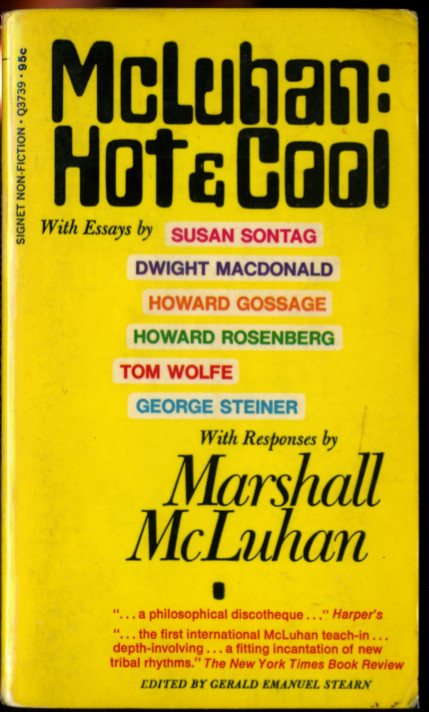Bogumiła Suwara, Zuzana Husárová (eds.): V sieti strednej Európy: nielen o elektronickej literatúre: (2012) [Slovak, Czech]
Filed under book | Tags: · central europe, computer games, digital text, electronic literature, experimental literature, hypermedia, internet, literature, networks, poetry, text, theory, writing

(EN) This international collective monograph brings an understanding of the problematic of changes in artistic communication in the context of the cultural practices of the post-digital era and simultaneously asks new questions about it. This book presents the keystones of electronic literature research that are based, among others, on the digital character of the text, on multisensory reading, playfulness, hypermediality, experimentation and Internet communication. Its aim is also to map digital literature in the cultural environment of Central Europe. Researchers from Slovakia, The Czech Republic, Poland, Slovenia and Croatia collaborated on the publication. The monograph is a printed textual tapestry of various approaches, theories and perspectives that communicate among themselves, react to each other and together clarify the structure that literature personifies in the new media realm.
(SK) Kolektívna monografia prináša nové poznatky a zároveň kladie otázky o problematike zmien v umeleckej komunikácii v kontexte kultúry post-digitálnej doby. Prezentuje piliere výskumu elektronickej literatúry, ktoré okrem iného stoja na digitálnej podstate textu, na multisenzorickom čítaní, hravosti a hypermedialite, experimente a internetovej komunikácii. Cieľom je zároveň zmapovať recepciu digitálnej literatúry v kultúrnom prostredí strednej Európy. Na publikácii participovali bádatelia zo Slovenska, Čiech, Poľska, Slovinska a Chorvátska. Monografia je tlačenou textovou sieťou rôznych prístupov, teórií a hľadísk, ktoré vzájomne komunikujú, reagujú a spoločne dospievajú k osvetleniu štruktúry, ktorú literatúra v novo-mediálnom prostredí zosobňuje.
Contributions by Zuzana Husárová, Jana Kuzmíková, Gabriela Magová, Mira Nabělková, Andrzej Pająk, Katarina Peović Vuković, Mariusz Pisarski, Michal Rehúš a Jaroslav Šrank, Janez Strehovec, Bogumiła Suwara, Jaroslav Švelch
Publisher: SAP & Ústav svetovej literatúry SAV, Bratislava, 2012
Design and cover: Katarína Gatialová
ISBN 9788080950767
312 pages
Quo vadis elektronická kultúra? (a series of activities around the publication, Bratislava, 26-27 September 2012)
PDF (updated on 2012-9-25)
EPUB (updated on 2012-9-25)
Gerald Emanuel Stearn (ed.): McLuhan: Hot & Cool: A Primer for the Understanding of & a Critical Symposium with a Rebuttal by McLuhan (1967)
Filed under book | Tags: · global village, information, literacy, mass media, media theory, photography, print, radio, semiotics, speech, technology, television, text, writing

“A brilliant amalgam of articles, discussions, essays and interviews with and about the Pop Oracle himself, The Complete McLuhan: the most controversial thinker of the electronic age.” (from the back cover)
With essays by Howard Luck Gossage, Tom Wolfe, John Culkin, SJ., Dean Walker, Kenneth E. Boulding, George P. Elliott, Rudolph E. Morris, Walter Ong, SJ., Ammunition (C.I.O.), William Blissett, Harley Parker, Robert Shafer, John Freund, Patrick D. Hazard, Dell Hymes, Frank Kermode, A. Alvarez, Dan M. Davin, Raymond Williams, Harold Rosenberg, Dwight Macdonald, Christopher Ricks, Jack Behar, Ben Lieberman, John M. Johansen, George Steiner, Jonathan Miller, Andrew Forge, Benjamin DeMott, Susan Sontag; responses by Marshall McLuhan; and an interview by Gerald E. Stearn with McLuhan.
Publisher The Dial Press, New York, 1967
Signet Non-Fiction series, Q3739
312 pages
PDF (no OCR)
Comment (1)Lisa Gitelman: Scripts, Grooves, and Writing Machines: Representing Technology in the Edison Era (1999)
Filed under book | Tags: · history of technology, hypertext, kinetoscope, language, phonograph, reading, technology, typewriter, writing

This is a richly imaginative study of machines for writing and reading at the end of the nineteenth century in America. Its aim is to explore writing and reading as culturally contingent experiences, and at the same time to broaden our view of the relationship between technology and textuality.
At the book’s heart is the proposition that technologies of inscription are materialized theories of language. Whether they failed (like Thomas Edison’s “electric pen”) or succeeded (like typewriters), inscriptive technologies of the late nineteenth century were local, often competitive embodiments of the way people experienced writing and reading. Such a perspective cuts through the determinism of recent accounts while arguing for an interdisciplinary method for considering texts and textual production.
Starting with the cacophonous promotion of shorthand alphabets in postbellum America, the author investigates the assumptions—social, psychic, semiotic—that lie behind varying inscriptive practices. The “grooves” in the book’s title are the delicate lines recorded and played by phonographs, and readers will find in these pages a surprising and complex genealogy of the phonograph, along with new readings of the history of the typewriter and of the earliest silent films. Modern categories of authorship, representation, and readerly consumption emerge here amid the un- or sub-literary interests of patent attorneys, would-be inventors, and record producers. Modern subjectivities emerge both in ongoing social constructions of literacy and in the unruly and seemingly unrelated practices of American spiritualism, “Coon” songs, and Rube Goldberg-type romanticism.
Just as digital networks and hypertext have today made us more aware of printed books as knowledge structures, the development and dissemination of the phonograph and typewriter coincided with a transformed awareness of oral and inscribed communication. It was an awareness at once influential in the development of consumer culture, literary and artistic experiences of modernity, and the disciplinary definition of the “human” sciences, such as linguistics, anthropology, and psychology. Recorded sound, typescripts, silent films, and other inscriptive media are memory devices, and in today’s terms the author offers a critical theory of ROM and RAM for the century before computers.
Publisher Stanford University Press, 1999
ISBN 0804732701, 9780804732703
282 pages
Review (Daniel Gilfillan, RCCS, 2002)
Download (removed on 2013-11-12 upon request of the publisher)
Comment (0)
